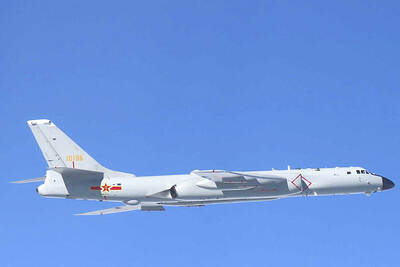Prime Minister Junichiro Koizumi urged voters to back the privatization of Japan's postal service while his rival attacked the plan yesterday, wrapping up a dramatic campaign for parliamentary elections expected to deliver victory to the ruling party.
The ballot today for the 480-seat lower house of parliament was widely seen just the way Koizumi wanted it: as a referendum for his project to split up and sell Japan Post's mail, insurance and savings services, creating the world's largest private bank.
"Are public employees the only ones who can take care of important jobs?" Koizumi thundered to a crowd at a Tokyo train station. "Privatization of the postal service is the best way to cut down on the number of civil servants in Japan."
In another part of the city, his main rival, Katsuya Okada, the leader of the opposition Democratic Party of Japan (DPJ), drove home his message that the country has more pressing concerns than the postal service.
"Japan faces problems of decreasing of population, aging society and increasing of national debts," Okada said. "Mr. Koizumi sounds as if life will be all rosy if the postal service is privatization, but no one takes what he says seriously."
Opinion polls throughout the campaign showed Koizumi with rising support since he dissolved the powerful lower house on Aug. 8 and called snap elections after his postal privatization plan was torpedoed in the upper house.
The Asahi newspaper yesterday showed 42 percent of respondents wanted Koizumi to continue as prime minister, while only 17 supported an Okada-led government. The paper surveyed 1,031 people by phone on Thursday and Friday.
"If not Koizumi, who else can be prime minister?" asked Kiyoko Takasu, 44, part-time worker for a credit union bank. "He is more articulate than past prime ministers, so that's why people can identify with him."
The balance of the election for the 480-seat chamber, however, rested with a large block of undecided voters.
Success at the polls for the ruling Liberal Democratic Party (LDP) would be a personal triumph for Koizumi, whose reform plan would put Japan Post's ?330 trillion (US$3 billion) in assets in private hands.
An LDP win would also bolster Koizumi's standing as one of the most dynamic Japanese political personalities of the postwar era.
The campaign that followed has been the most riveting in recent memory in Japan, as Koizumi purged 37 anti-reform lawmakers from his party and drafted celebrity candidates, including a former beauty queen and an Internet mogul, to run as "assassins" against his enemies.
The drama has fascinated a country long accustomed to highly scripted campaigns without burning issues or distinctive personalities. One poll forecast turnout would be 75 percent, a hefty jump over the 60 percent participation in the last lower house elections in 2003.
A strong showing by the LDP would also reverse the growth of the Democrats, the party that many had hoped would turn Japan's essentially one-party state into a competitive, two-party system.
The DPJ made impressive gains in elections in 2003 and last year, and leader Okada's dead-earnest persona and attention to policy details were considered by supporters to be an antidote to Koizumi's sometimes flippant management style.
Okada has struggled to shift the focus on what he and other skeptics argued were Koizumi's shortcomings -- the ailing pension system, the country's mounting debt, and persistence of corruption and wasteful spending.
The DPJ also suffers from doubts among many in Japan that it is ready to take the reins of government -- even among those fed up with the LDP.

PARLIAMENT CHAOS: Police forcibly removed Brazilian Deputy Glauber Braga after he called the legislation part of a ‘coup offensive’ and occupied the speaker’s chair Brazil’s lower house of Congress early yesterday approved a bill that could slash former Brazilian president Jair Bolsonaro’s prison sentence for plotting a coup, after efforts by a lawmaker to disrupt the proceedings sparked chaos in parliament. Bolsonaro has been serving a 27-year term since last month after his conviction for a scheme to stop Brazilian President Luiz Inacio Lula da Silva from taking office after the 2022 election. Lawmakers had been discussing a bill that would significantly reduce sentences for several crimes, including attempting a coup d’etat — opening up the prospect that Bolsonaro, 70, could have his sentence cut to

China yesterday held a low-key memorial ceremony for the 1937 Nanjing Massacre, with Chinese President Xi Jinping (習近平) not attending, despite a diplomatic crisis between Beijing and Tokyo over Taiwan. Beijing has raged at Tokyo since Japanese Prime Minister Sanae Takaichi last month said that a hypothetical Chinese attack on Taiwan could trigger a military response from Japan. China and Japan have long sparred over their painful history. China consistently reminds its people of the 1937 Nanjing Massacre, in which it says Japanese troops killed 300,000 people in what was then its capital. A post-World War II Allied tribunal put the death toll

A passerby could hear the cacophony from miles away in the Argentine capital, the unmistakable sound of 2,397 dogs barking — and breaking the unofficial world record for the largest-ever gathering of golden retrievers. Excitement pulsed through Bosques de Palermo, a sprawling park in Buenos Aires, as golden retriever-owners from all over Argentina transformed the park’s grassy expanse into a sea of bright yellow fur. Dog owners of all ages, their clothes covered in dog hair and stained with slobber, plopped down on picnic blankets with their beloved goldens to take in the surreal sight of so many other, exceptionally similar-looking ones.

‘UNWAVERING ALLIANCE’: The US Department of State said that China’s actions during military drills with Russia were not conducive to regional peace and stability The US on Tuesday criticized China over alleged radar deployments against Japanese military aircraft during a training exercise last week, while Tokyo and Seoul yesterday scrambled jets after Chinese and Russian military aircraft conducted joint patrols near the two countries. The incidents came after Japanese Prime Minister Sanae Takaichi triggered a dispute with Beijing last month with her remarks on how Tokyo might react to a hypothetical Chinese attack on Taiwan. “China’s actions are not conducive to regional peace and stability,” a US Department of State spokesperson said late on Tuesday, referring to the radar incident. “The US-Japan alliance is stronger and more